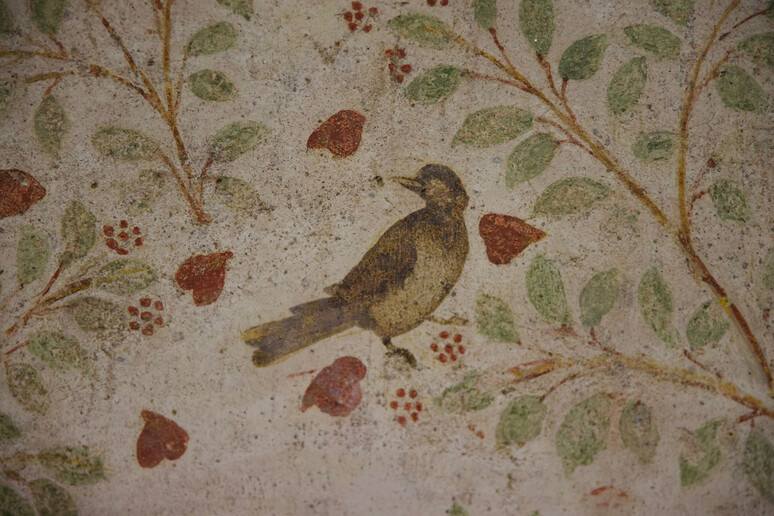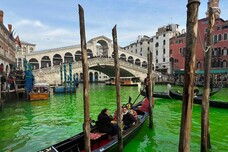Couples visiting Assisi cannot fail
to be entranced by the 'wall of love' painted by the ancient
Roman elegiac poet Sextus Propertius in the domus that carries
his name.
The wall featuring 96 birds of different species and vegetation
with heart-shaped foliage is located in the cryptoporticus of
the ancient edifice beneath the crypt of the church of Saint
Mary Major and dates to the first century AD.
ANSA admired the wall close up with museum worker Beatrice
Camilli ahead of Valentine's Day on Wednesday.
"It represents a viridarium, a sort of wide-open window onto a
garden in which no fewer than 96 different birds are depicted
amidst branches fluttering in the air, with leaves and flower
petals in the shape of little hearts," said Camilli.
"It can certainly be called the wall of love, both because of
the painted hearts and because of Propertius' himself," she
continued, referring to the Roman poet's serious love for the
"Cynthia" of his poems.
Camilli pointed out that the painting also features three red
lilies.
"Usually the white lily is associated with the Annunciation, but
these red ones suggest that they were painted more on a love
theme," said the expert.
However, she also recalled that, Propertius aside, the Romans
had little time for romantic love.
"In ancient Rome love was not very sentimental and marriage was
often a political affair," she said.
ALL RIGHTS RESERVED © Copyright ANSA











